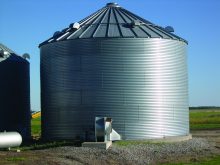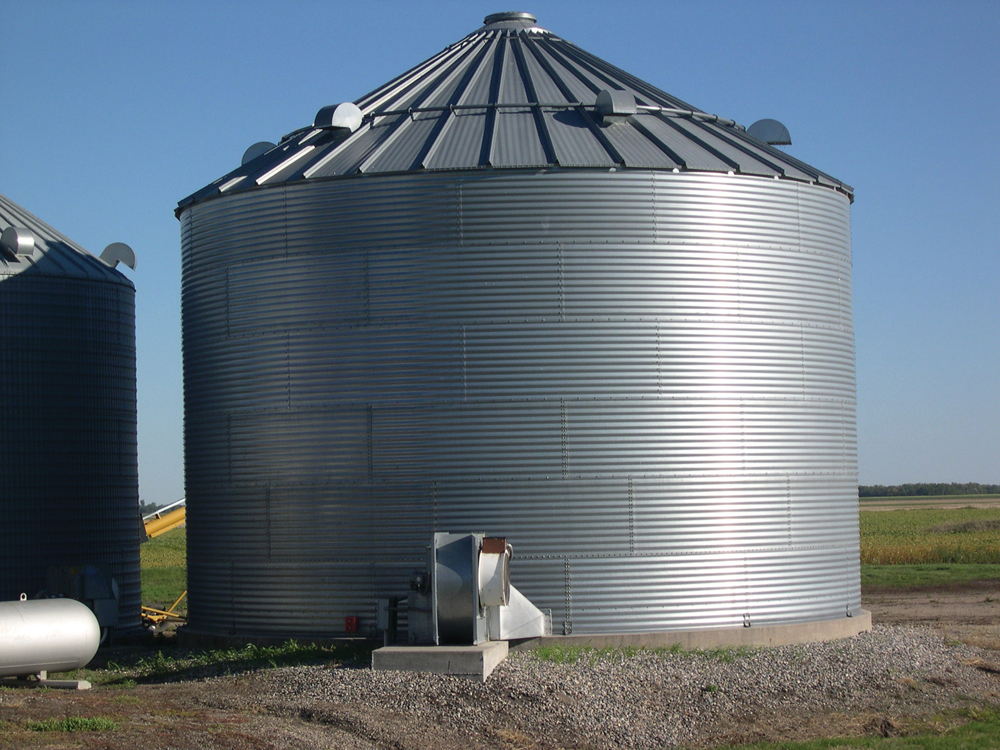As crops are coming off the fields and into the bin, Keep it Clean is reminding growers of best management practices to maintain crop quality and reduce storage risk. Two of the biggest risks to stored grain are contamination and spoilage.
“Before storing canola, it’s absolutely essential that the bins are clean and malathion-free,” says Ian Epp, agronomy specialist and market access lead at the Canola Council of Canada. “Any bin that has been treated with malathion at any point this growing season should not be used to store canola this year.”
Malathion residue can linger in bins for months after treatment and can be transferred from the bin to canola seed, putting marketability at risk. Canola found with malathion residues is unacceptable for export customers and can damage Canada’s reputation as a trusted supplier of high-quality canola.
Read Also

Lightning gives and takes in Prairie fields
Lightning in fields can be a source of nitrogen but at times can result in crop damage which, at a glance, resembles a very localized disease outbreak, plant pathologist Ieuan Evans writes.
Moisture and temperature are the two biggest factors in grain spoilage. Making sure grain that goes into the bin has been dried to an optimum moisture level as well as checking bins frequently to monitor temperature and identify any issues early will reduce the chances of spoilage.
“When it comes time to store cereals, one of the best things a grower can do for their grain is to ensure that it’s dry and kept cool — well below 10 C,” says Krista Zuzak, director of crop protection and production for Cereals Canada.

Watch for OTA development
Ochratoxin A (OTA), is a potent, naturally occurring mycotoxin that can form on stored cereal grains in high moisture conditions. OTA is produced by a naturally occurring soil fungus; however, unlike deoxynivalenol (also known as DON or vomitoxin), which is formed by fusarium infections in the field, OTA forms exclusively in storage.
“OTA can be a risk to market access as countries can have different maximum allowable limits of OTA in grain,” says Zuzak. “Make sure to monitor this regularly throughout the storage season and to remove a minimum of one-third of bins if there’s a detectable temperature rise. Not doing so risks the development of OTA.”
Preventing even the smallest pockets of OTA-contaminated cereals during storage is the only way to protect the health of consumers and avoid product recalls. By taking steps to prevent the formation of OTA in stored grain, farmers can protect their investments and help keep markets open for all.
Moisture can also affect the development of OTA as droplets of water condensing on grain allows the fungus to grow. Cooling grain as quickly as possible and keeping it cool can help reduce the production of condensation in storage.
No matter the crop that’s in the bin, Keep it Clean recommends checking bins frequently and following these best management practices for safe storage:
- Keep bins and grain handling equipment clean.
- Thoroughly clean dust and debris between grain lots.
- Ensure crops are harvested or dried to a safe level for storage.
- Do not blend tough/damp grain with dry grain on farm — it’s too risky.
- Cool the grain quickly to well below 10 C to achieve uniform, cold temperatures throughout the bulk, ideally well below zero.
- Monitor bins regularly. Move at least one-third of the grain out of the bin with any detectable temperature rise.
- Condition grain as soon as possible in the spring, when ambient temperatures allow for drying.
By keeping an eye on your bins and taking these steps to maintain the quality of your stored canola and cereals grains, you can protect the stored crops’ marketability and your investment.
“Keep it Clean’s goal is to make risk mitigation easy for farmers,” says Zuzak. “Not only does following its guides help protect farmers’ investments, but it helps keep markets open for all Canadian growers and maintains our reputation of being a world-class supplier of grain to countries around the world.”















